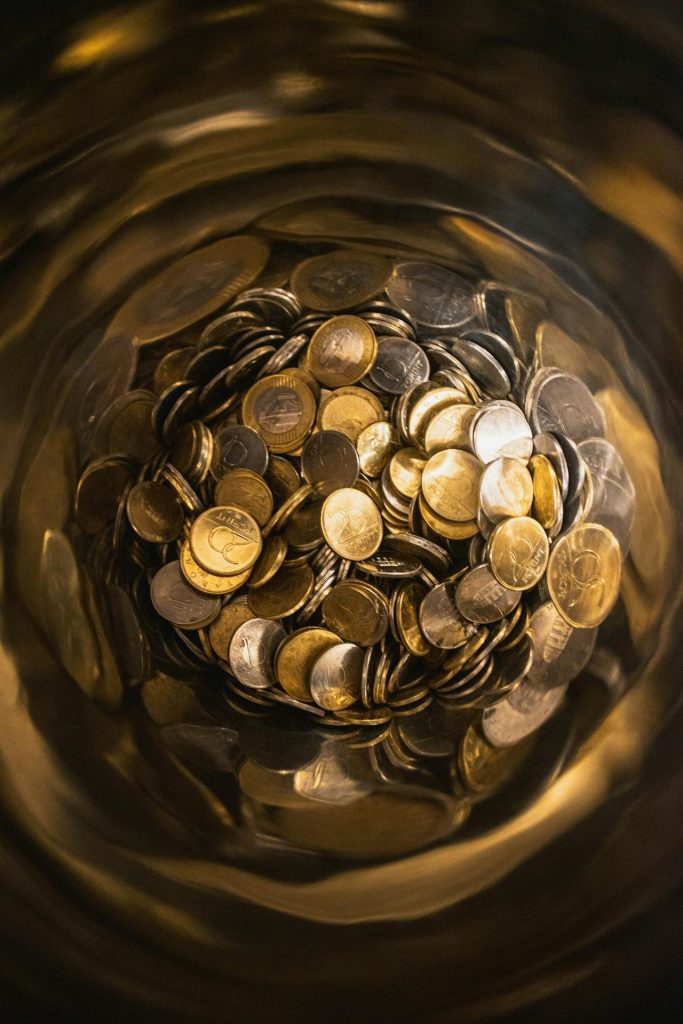The Enduring Appeal of Challenge Coin Designs
Challenge coins are more than just tokens; they are symbols of honor, camaraderie, and shared history. Over the years, these coins have evolved from simple military insignia to intricate designs representing a wide range of organizations and causes. This article delves into the rich history of challenge coin designs, exploring their origins, evolution, and the latest trends shaping their future. By understanding the journey of these unique collectibles, we can appreciate their significance and the artistry involved in their creation.
1. The Origins of Challenge Coin Designs
Ancient Beginnings
The concept of challenge coins can be traced back to ancient times when coins and medallions were used to reward soldiers and signify allegiance. Roman soldiers, for example, were often given coins to honor their bravery and accomplishments.
Example: Roman legionaries received coins bearing the emperor’s likeness and their legion’s insignia, symbolizing their loyalty and distinguished service.
World War I: The Birth of the Modern Challenge Coin
The modern tradition of challenge coins is commonly believed to have begun during World War I. A young American pilot’s medallion, which helped him prove his identity after being captured by enemy forces, is often credited with popularizing the use of such coins in the military.
Example: The pilot’s coin, marked with his squadron’s emblem, became a symbol of camaraderie and loyalty, inspiring other military units to create their own custom challenge coins.
World War II and Beyond
During World War II, the use of challenge coins expanded significantly. Units across the Allied forces began creating their own unique coins to build esprit de corps and recognize the contributions of their members.
Example: Paratroopers in the 101st Airborne Division created challenge coins to commemorate their participation in key battles, such as the D-Day invasion and the Battle of the Bulge.
2. The Evolution of Challenge Coin Designs
Post-Vietnam War Era
In the decades following the Vietnam War, challenge coins became more elaborate and widespread. Each branch of the military developed its own customs and designs, leading to a proliferation of unique and meaningful coins.
Example: The U.S. Navy SEALs created challenge coins featuring their distinctive trident emblem, symbolizing the elite nature of their unit and their commitment to their mission.
Incorporation of Advanced Craftsmanship
As technology and craftsmanship techniques advanced, challenge coins began to feature more intricate designs and higher-quality materials. Enamel coloring, 3D reliefs, and detailed engravings became common, enhancing the visual appeal and significance of the coins.
Example: A modern challenge coin might feature multiple colors, raised and recessed areas, and detailed images that tell a story or highlight specific achievements.
Expansion Beyond the Military
The use of challenge coins has expanded beyond the military to various sectors, including government agencies, law enforcement, corporate organizations, and non-profits. Each of these sectors has developed its own unique challenge coin designs to recognize achievements and build team spirit.
Example: The FBI and the Department of Homeland Security (DHS) use challenge coins to honor exceptional service and achievements within their ranks, often featuring their respective logos and mission symbols.
3. Key Elements of Challenge Coin Designs
Symbolism and Imagery
Symbolism and imagery are crucial elements in the design of challenge coins. Each symbol, color, and image is chosen to convey specific meanings and reflect the values and mission of the issuing organization.
Example: A challenge coin designed for a veterans’ support group might include images of the American flag, an eagle, and a soldier, symbolizing patriotism, freedom, and sacrifice.
Shapes and Sizes
While traditional challenge coins are round, modern designs often incorporate various shapes and sizes to enhance their uniqueness and relevance. Custom shapes can add a distinct element to the coin, making it more memorable.
Example: A fire department might issue a challenge coin in the shape of a firefighter’s helmet or badge, adding a unique and personal touch to the design.
Materials and Finishes
The choice of materials and finishes can significantly impact the coin’s appearance and perceived value. Common materials include bronze, silver, and gold, with finishes ranging from polished to antique.
Example: A gold-plated challenge coin with a polished finish can add a touch of elegance and prestige, making it more appealing to recipients.
Personalization and Customization
Adding personalized elements, such as the recipient’s name, a specific event date, or a serial number, can make the coins more special and increase their value to recipients.
Example: A custom challenge coin awarded to a top fundraiser for a non-profit event might include the fundraiser’s name and the event’s date, making it a cherished personal memento.
4. Current Trends in Challenge Coin Designs
Innovative Shapes and Cutouts
Modern challenge coin designs often feature innovative shapes and cutouts that go beyond the traditional round form. These unique designs help the coins stand out and add a layer of complexity to their creation.
Example: A sports team might create a challenge coin in the shape of their logo or mascot, incorporating cutouts to highlight specific details.
3D and Multi-Layered Designs
The use of 3D and multi-layered designs has become increasingly popular, allowing for more depth and detail. These techniques create a tactile experience and enhance the overall aesthetic of the coins.
Example: A challenge coin for a space exploration mission might feature a 3D depiction of a rocket launching, with multiple layers representing different elements of the mission.
Interactive Elements
Interactive elements, such as spinning parts or removable pieces, add an engaging aspect to challenge coins. These features can make the coins more memorable and enjoyable for recipients.
Example: A challenge coin designed for a security agency might include a removable magnifying glass, symbolizing the agency’s investigative work.
Digital Integration
With the rise of digital technology, some challenge coins now incorporate elements like QR codes or NFC chips that link to exclusive content or interactive experiences. This integration enhances the coin’s functionality and value.
Example: A challenge coin with an embedded QR code might link to a video message from the organization’s founder, providing a personal touch and deeper connection.
Eco-Friendly Materials
As environmental awareness grows, there is an increasing trend towards using eco-friendly materials and sustainable production methods in challenge coin designs. This approach aligns with the values of organizations committed to environmental stewardship.
Example: An environmental non-profit might create challenge coins using recycled metals and eco-friendly finishes, reinforcing their commitment to sustainability.
5. Implementing Challenge Coin Designs in Various Sectors
Military and Defense
In the military, challenge coins continue to play a crucial role in recognizing service and fostering camaraderie. Modern designs often incorporate advanced craftsmanship and personalization to honor specific achievements and milestones.
Example: A military unit might issue a challenge coin to commemorate a successful deployment, featuring detailed imagery of the mission and personalized elements for each recipient.
Law Enforcement and Emergency Services
Law enforcement and emergency services use challenge coins to recognize bravery, dedication, and community service. These coins often feature symbols of protection and justice.
Example: A police department might create a challenge coin to honor officers who have demonstrated exceptional bravery in the line of duty, incorporating the department’s badge and motto.
Corporate Organizations
Corporate organizations use challenge coins to build team spirit, recognize employee achievements, and promote company values. These coins can be part of employee recognition programs or special corporate events.
Example: A tech company might issue challenge coins to employees who have completed significant projects, featuring the company’s logo and a depiction of the project’s impact.
Non-Profit and Community Groups
Non-profits and community groups use challenge coins to engage supporters, recognize volunteers, and raise awareness for their causes. These coins serve as symbols of commitment and community spirit.
Example: A non-profit organization dedicated to cancer research might create challenge coins for top fundraisers, featuring symbols of hope and the organization’s mission.
Educational Institutions
Educational institutions use challenge coins to recognize academic achievements, commemorate milestones, and build school spirit. These coins can be awarded to students, faculty, and alumni.
Example: A university might issue challenge coins to graduates, featuring the institution’s crest and the graduation year, serving as a keepsake of their academic journey.
6. Designing and Creating Custom Challenge Coins
Conceptualization and Theme
The design process begins with conceptualizing a theme that aligns with the organization’s mission and the specific achievements being recognized. The theme should resonate with the target audience and convey a powerful message.
Tips:
- Purpose: Define the primary purpose of the coin, whether it’s to recognize service, commemorate an event, or promote a cause.
- Audience: Consider the interests and values of the target audience to create a design that appeals to them.
- Message: Ensure the coin’s design communicates the intended message clearly and effectively.
Example: An organization focused on environmental conservation might choose a theme centered around nature, with symbols like trees, animals, and the Earth to convey their mission.
Incorporating Symbolism and Imagery
Symbolism and imagery play a crucial role in the design of challenge coins. Each element should carry specific meanings and enhance the overall message of the coin.
Example: A challenge coin designed for a veterans’ support group might include images of the American flag, an eagle, and a soldier, symbolizing patriotism, freedom, and sacrifice.
Choosing Colors and Materials
The choice of colors and materials can significantly impact the coin’s visual appeal and perceived value. Use colors that align with the organization’s branding and materials that reflect the coin’s significance.
Example: A gold-plated coin with vibrant enamel colors can add a touch of elegance and prestige, making it more appealing to potential recipients.
Personalization and Customization
Adding personalized elements, such as the recipient’s name, a specific event date, or a serial number, can make the coins more special and increase their value to recipients.
Example: A custom challenge coin awarded to a top fundraiser for a non-profit event might include the fundraiser’s name and the event’s date, making it a cherished personal memento.
Production and Quality Control
Once the design is finalized, it’s crucial to work with a reputable manufacturer to ensure high-quality production. Pay attention to details such as the finish, weight, and durability of the coins.
Example: A military unit might work with a specialized manufacturer to produce coins with a high-quality finish and intricate detailing, ensuring they meet the unit’s standards and expectations.
7. Future Trends in Challenge Coin Designs
Integration of Technology
The integration of technology into challenge coin designs is likely to continue, with features like QR codes and NFC chips becoming more common. These elements can link to digital content, enhancing the coin’s functionality and value.
Example: A challenge coin for a tech conference might include a QR code that links to exclusive event content, providing attendees with additional value and engagement.
Focus on Sustainability
As environmental consciousness grows, the use of sustainable materials and eco-friendly production methods will likely become a standard practice in challenge coin manufacturing.
Example: An organization committed to environmental causes might choose to produce challenge coins using recycled metals and biodegradable packaging, aligning with their values and mission.
Customization and Personalization
The demand for highly personalized and customizable challenge coins will continue to grow. Advances in manufacturing technology will allow for more detailed and individualized designs.
Example: A corporate organization might offer employees the option to design their own challenge coins, incorporating personal achievements and milestones.
Interactive and Functional Designs
The trend towards interactive and functional challenge coins will likely expand, with coins featuring moving parts, removable elements, or even augmented reality components.
Example: A challenge coin for a gaming convention might include a spinning element or an AR feature that brings the coin to life through a mobile app.
The Enduring Legacy of Challenge Coin Designs
Challenge coin designs have come a long way from their ancient origins to their modern applications across various sectors. These small yet powerful tokens have evolved into intricate pieces of art that carry significant meaning and value. By understanding the history and trends in challenge coin designs, we can appreciate the artistry involved in their creation and the impact they have on recognizing excellence, building community, and promoting shared values.
As we look to the future, challenge coin designs will continue to evolve, embracing new technologies and materials while preserving their symbolic heritage. Whether used in the military, corporate, non-profit, or educational sectors, challenge coins will remain enduring symbols of honor, unity, and achievement, cherished by those who receive and collect them.
If you are interested in high-quality custom made challenge coins, you can fill out one of our FREE quote forms or call us at 800-335-2403.



